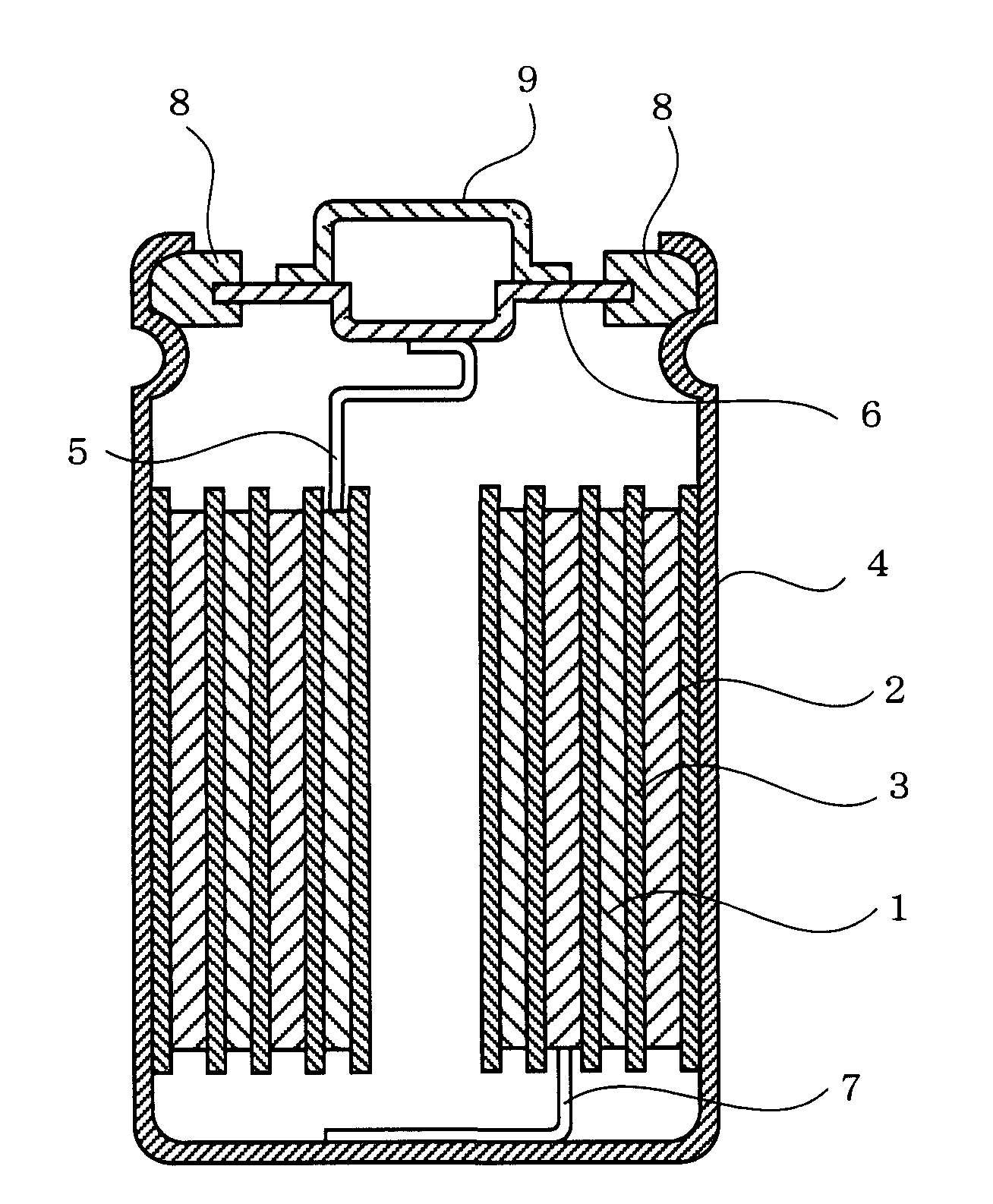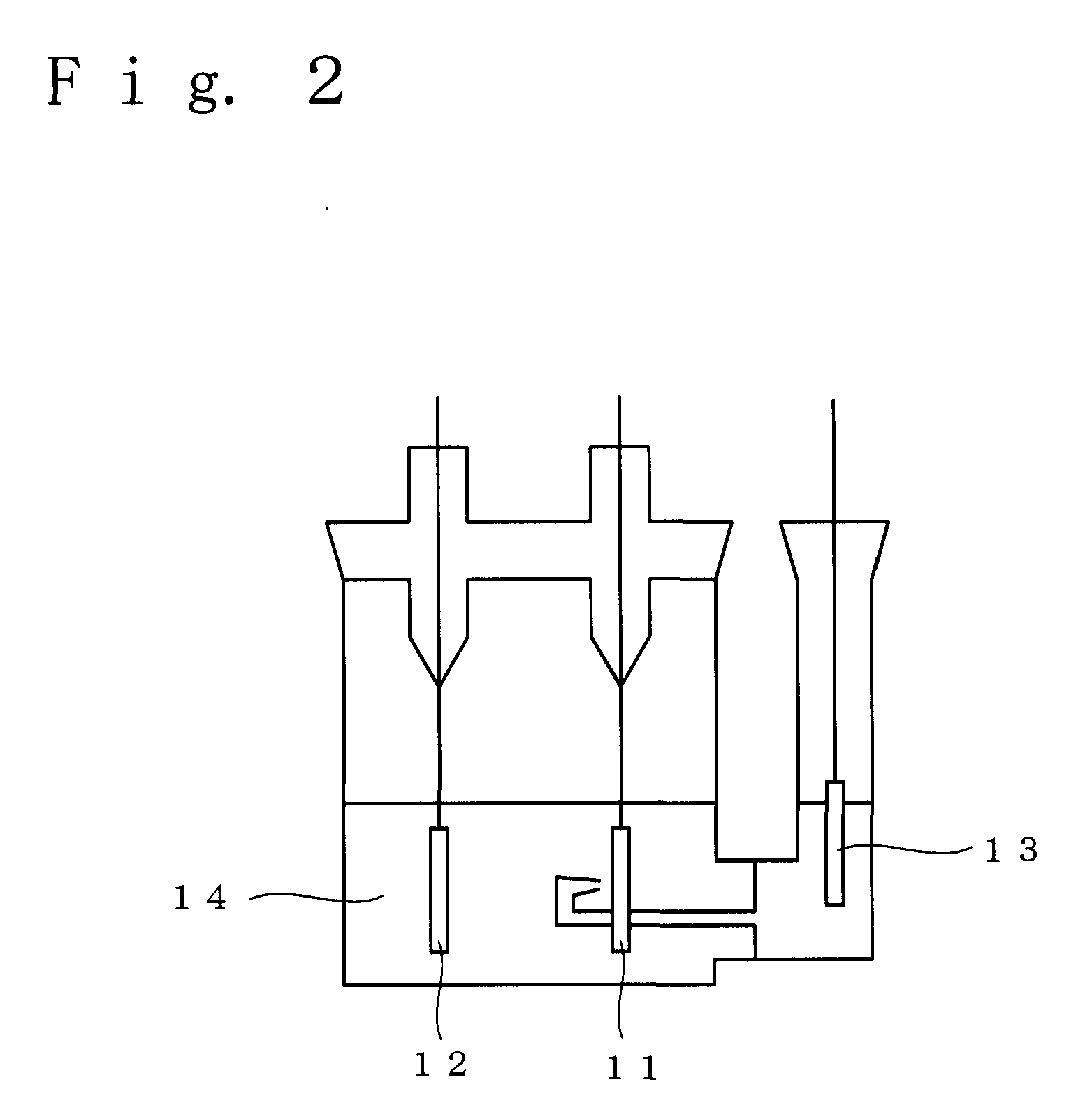Non-aqueous electrolyte for secondary battery and non-aqueous electrolyte secondary battery
a secondary battery and non-aqueous electrolyte technology, applied in the direction of primary cells, non-aqueous electrolyte cells, electrochemical generators, etc., can solve the problems of increased viscosity of non-aqueous electrolyte, rise of reactivity with a negative electrode, and suppresses the decomposition of chain fluorinated carboxylic acid ester, and suppresses the decomposition of excessively. , the effect o
- Summary
- Abstract
- Description
- Claims
- Application Information
AI Technical Summary
Benefits of technology
Problems solved by technology
Method used
Image
Examples
example 3
[0053]In Example 3, a mixed solvent as the non-aqueous solvent of the non-aqueous electrolyte was prepared as follows. The foregoing 4-fluoroethylene carbonate (4-FEC) used in Example 1 as film forming chemical compound was mixed with 2,2-difluoroethyl acetate (CH3COOCH2CHF2) used in Example 1 as chain fluorinated carboxylic acid ester at a volume ratio of 1:9. Except for the non-aqueous solvent, a non-aqueous electrolyte secondary battery of Example 3 was fabricated in the same manner as in Example 1.
example 4
[0054]In Example 4, a mixed solvent as the non-aqueous solvent of the non-aqueous electrolyte was prepared as follows. The foregoing 4-fluoroethylene carbonate (4-FEC) used in Example 1 as film forming chemical compound, 2,2-difluoroethyl acetate (CH3COOCH2CHF2) used in Example 1 as chain fluorinated carboxylic acid ester, and dimethyl carbonate (DMC) were mixed at a volume ratio of 2:4:4. Except for the non-aqueous solvent, a non-aqueous electrolyte secondary battery of Example 4 was fabricated in the same manner as in Example 1.
example 5
[0055]In Example 5, a mixed solvent as the non-aqueous solvent of the non-aqueous electrolyte was prepared as follows. The foregoing 4-fluoroethylene carbonate (4-FEC) used in Example 1 as film forming chemical compound, 2,2-difluoroethyl acetate (CH3COOCH2CHF2) used in Example 1 as chain fluorinated carboxylic acid ester, and dimethyl carbonate (DMC) were mixed at a volume ratio of 2:4:4. Then, lithium hexafluorophosphate LiPF6 was dissolved in a concentration of 1 mol / l to the mixed solvent, and 2 weight % of vinyl ethylene carbonate (VEC) as film forming chemical compound was further added thereto. Except for the non-aqueous solvent, a non-aqueous electrolyte secondary battery of Example 5 was fabricated in the same manner as in Example 1.
PUM
 Login to View More
Login to View More Abstract
Description
Claims
Application Information
 Login to View More
Login to View More - R&D
- Intellectual Property
- Life Sciences
- Materials
- Tech Scout
- Unparalleled Data Quality
- Higher Quality Content
- 60% Fewer Hallucinations
Browse by: Latest US Patents, China's latest patents, Technical Efficacy Thesaurus, Application Domain, Technology Topic, Popular Technical Reports.
© 2025 PatSnap. All rights reserved.Legal|Privacy policy|Modern Slavery Act Transparency Statement|Sitemap|About US| Contact US: help@patsnap.com



